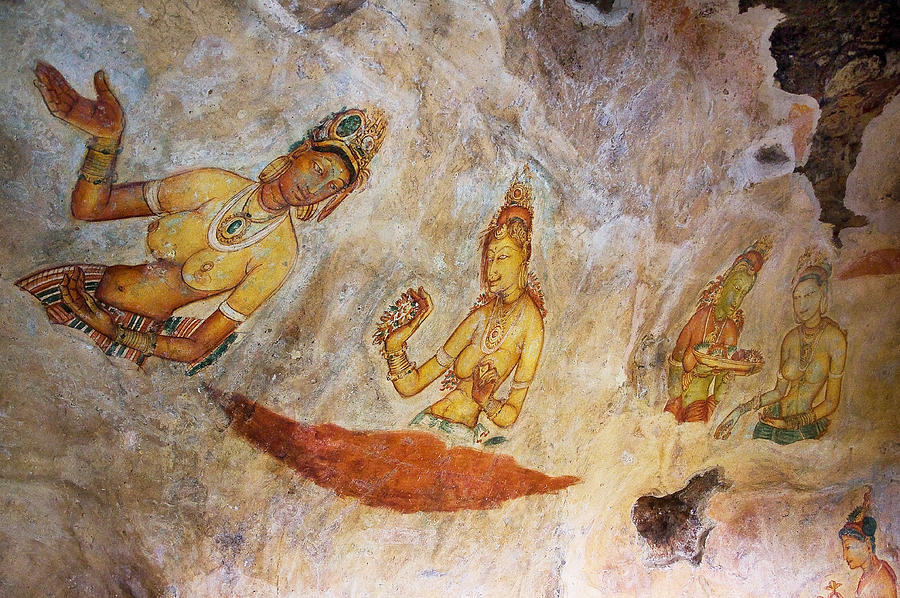
Ancient Cave Painting in Sigiriya. Sri Lanka

by Jenny Rainbow
Title
Ancient Cave Painting in Sigiriya. Sri Lanka
Artist
Jenny Rainbow
Medium
Photograph - Photography
Description
Ancient famous cave painting with Apsaras in Sigiriya, Sri Lanka praising the beauty of woman body.
"....The Ajanta cave paintings are from 1st century BCE to 7th Century ACE. The thirty cave temples are situated in the Ajanta gorge of the Waghora river, in the Indian state of Maharashtra. They are among the great paintings of the world.
"In spite of her obvious reality one feels at Ajanta that Woman is treated not as an individual, but as principle. She is there not female merely, but the INCARNATION OF ALL THE BEAUTY OF THE WORLD. Hence with all her gaiety, her charm, her insouciance, she never loses her dignity, and nowhere is she belittled or besmirched. Everywhere in this garden of flowers we behold the full-blown rose in its pride and perfume; - nowhere the trampled lily."
The paintings at Sigiriya are from 5th Century ACE. The original paintings are somewhat less than life-size and are drawn in three quarter profile as rising from clouds. Sri Lankan paintings shared the same ideals of Indian painters, but their treatment of feminine form was somewhat different. Ajanta women have narrow waists and rotund hips; breasts are exaggerated, the faces are round and smiling. The depiction of the female form has been influenced by descriptions in Sanskrit panegyrics. W. G. Archer comments as follows, "At Sigiri on the other hand, not only is the physical type somewhat different - the waists are long, the hips narrow, the faces thin - the expression itself suggests a seriousness of purpose, a calm and solemn realisation of sinuous majesty, even at times an enigmatic mystery. The female body is the aceme of glowing splendour but the bland and jolly faces of Karala, Mathura, Sanchi and Amaravati are totally absent. An element of conscious gravity is present and this we can only define as Sinhalese."
Benjamin Rowland writes as follows, "The swelling nubile breast, the tiny waist hardly greater in girth than the neck, the shapely tapered arms and exquisitely flower-like hands-these are all elements of the canon that determined the types of physical beauty in the cave shrines in India. Here these charms are even more provocative, through exaggeration. The resemblance of these ladies at Sigiri to the maidens in the sculpture of Amaravati is interesting for it was from this region, the territory of the Kistna river on the east coast of India, that Ceylon derived the sculpture style popular at this period. Just as the drawing is more vigorous than that of the more sophisticated artists of India, so the colours are bolder and more intense than the tonalities employed in the temples of the Deacon. If these artistic features are specifically Sinhalese, so even more evidently are the types; these girls with heavy-lidded eyes with these sharp rather aquiline noses and full lips can be recognized as typical of Ceylon today. A small but by no means minor stylistic feature of the Sigiri paintings is the method of drawing noses. There are two distinct types of nose: in one, the nose is represented in profile although the face may be in three-quarter view with the farther nostril clearly visible."
The sensuous tantric element which can be observed at Sigiriya as well, disappeared in painting in Sri Lanka as the moral element came to the fore.
Uploaded
August 31st, 2013
Statistics
Viewed 2,208 Times - Last Visitor from Fairfield, CT on 04/19/2024 at 5:29 AM
Embed
Share
Sales Sheet





















































